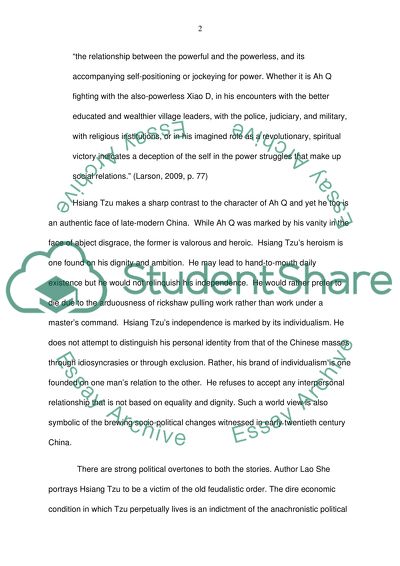Cite this document
(“Ah Q and Hsiang Tzu: Two Symbols of a Society in Transition Term Paper”, n.d.)
Ah Q and Hsiang Tzu: Two Symbols of a Society in Transition Term Paper. Retrieved from https://studentshare.org/literature/1487640-ah-q-and-hsiang-tzu-two-symbols-of-a-society-in-transition
Ah Q and Hsiang Tzu: Two Symbols of a Society in Transition Term Paper. Retrieved from https://studentshare.org/literature/1487640-ah-q-and-hsiang-tzu-two-symbols-of-a-society-in-transition
(Ah Q and Hsiang Tzu: Two Symbols of a Society in Transition Term Paper)
Ah Q and Hsiang Tzu: Two Symbols of a Society in Transition Term Paper. https://studentshare.org/literature/1487640-ah-q-and-hsiang-tzu-two-symbols-of-a-society-in-transition.
Ah Q and Hsiang Tzu: Two Symbols of a Society in Transition Term Paper. https://studentshare.org/literature/1487640-ah-q-and-hsiang-tzu-two-symbols-of-a-society-in-transition.
“Ah Q and Hsiang Tzu: Two Symbols of a Society in Transition Term Paper”, n.d. https://studentshare.org/literature/1487640-ah-q-and-hsiang-tzu-two-symbols-of-a-society-in-transition.


